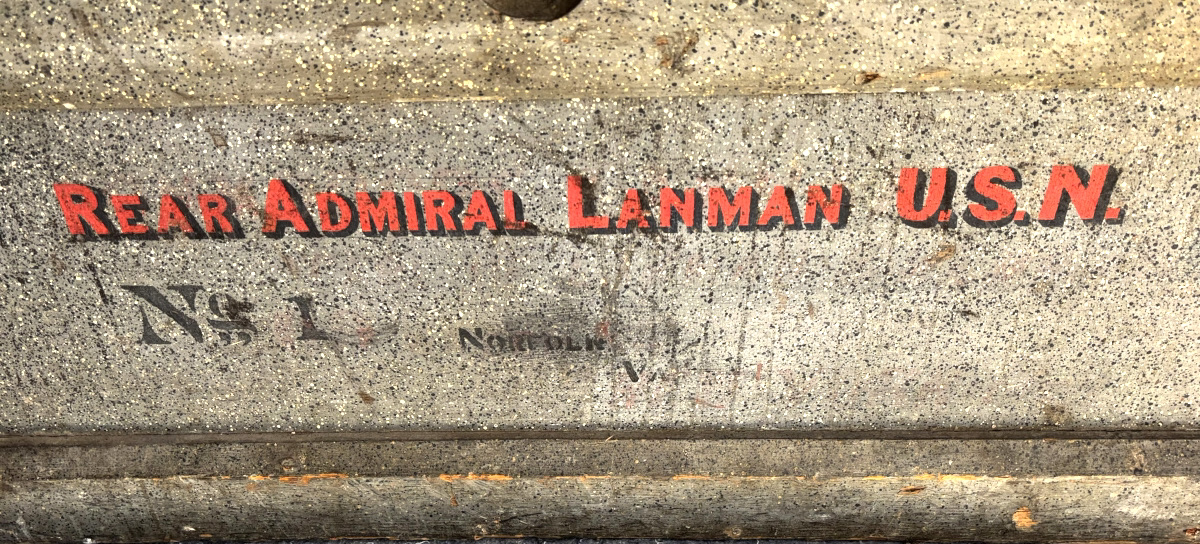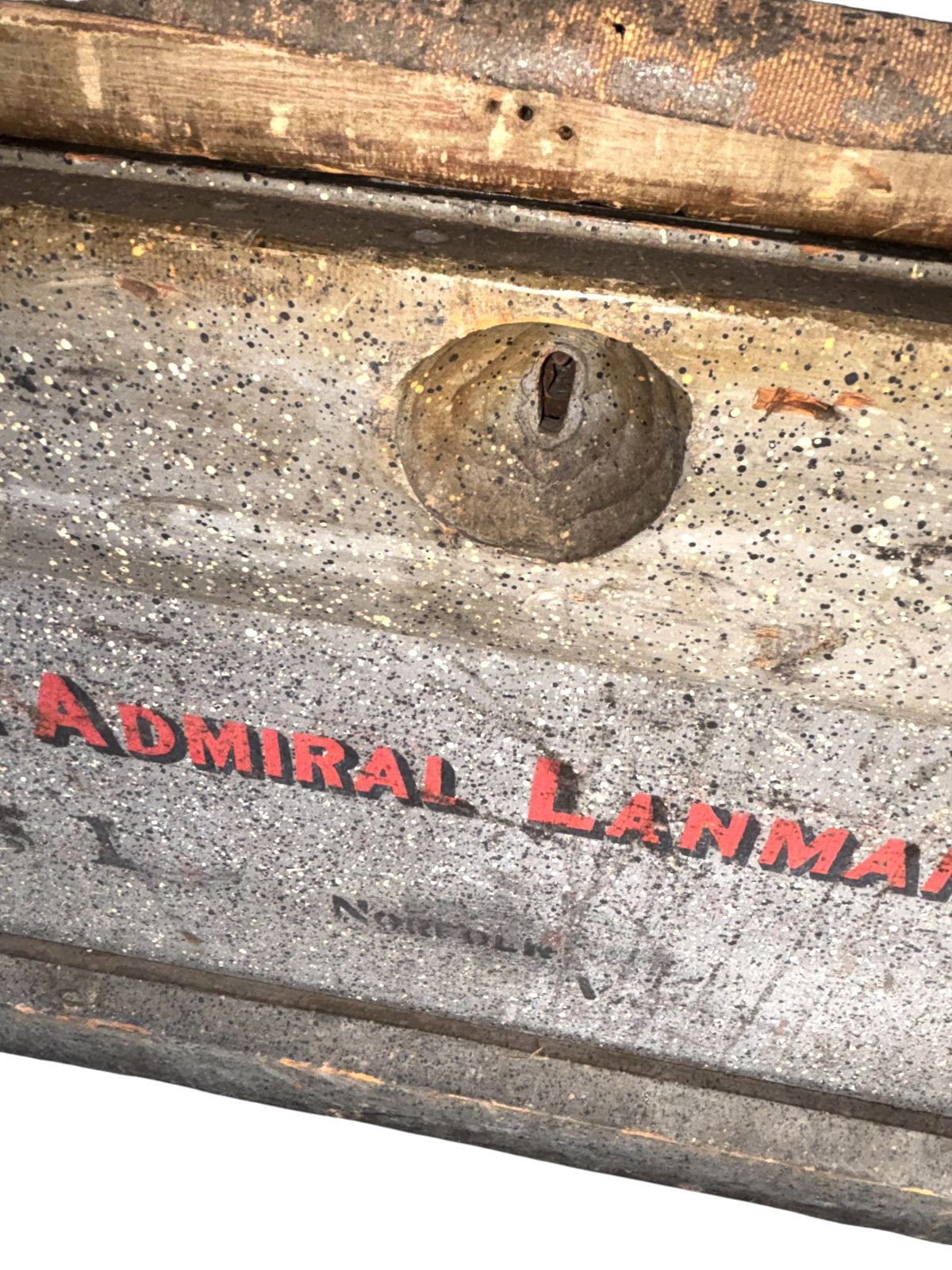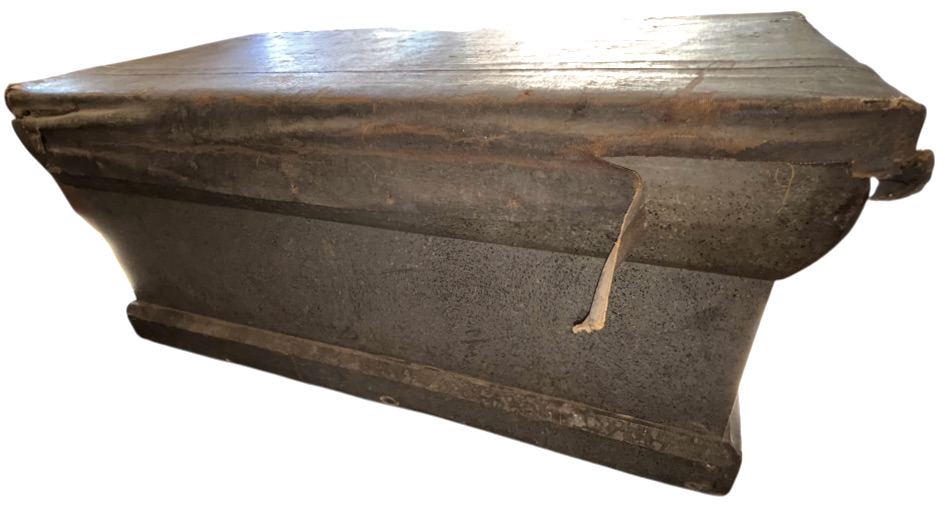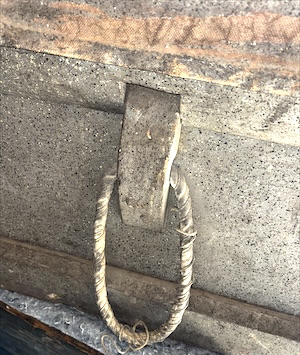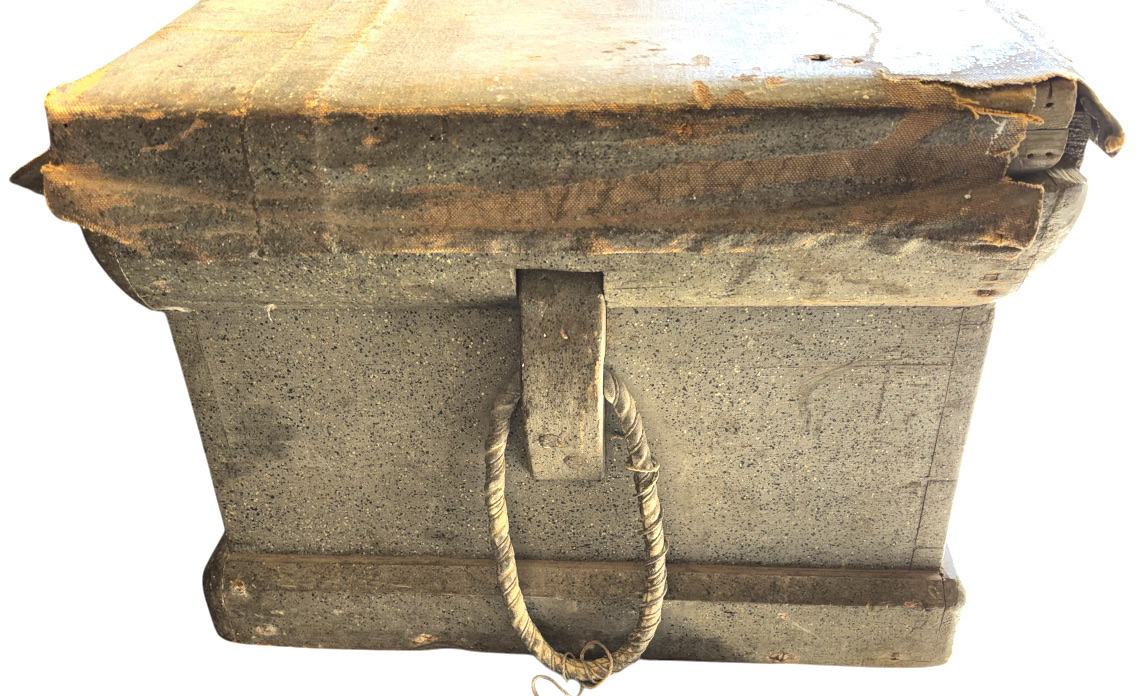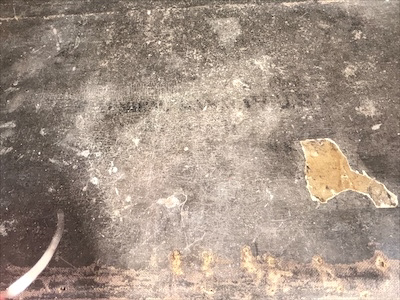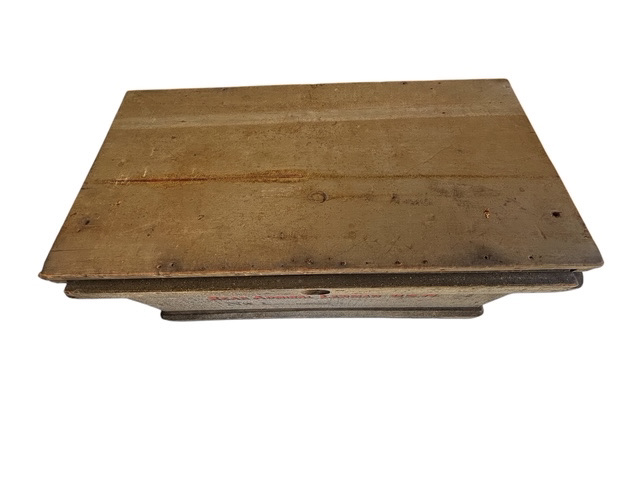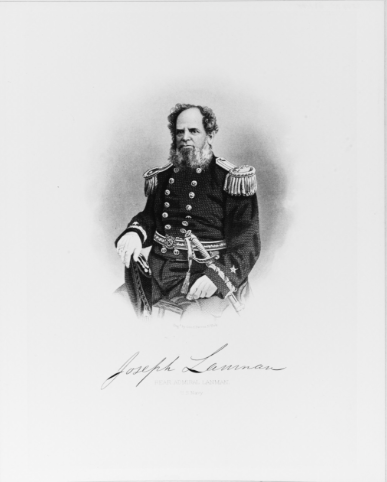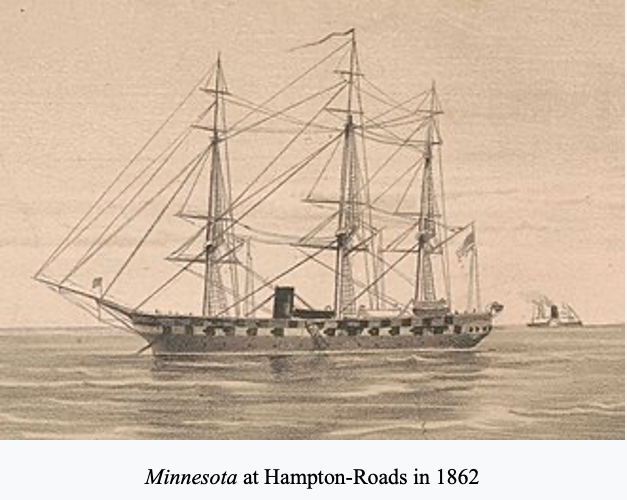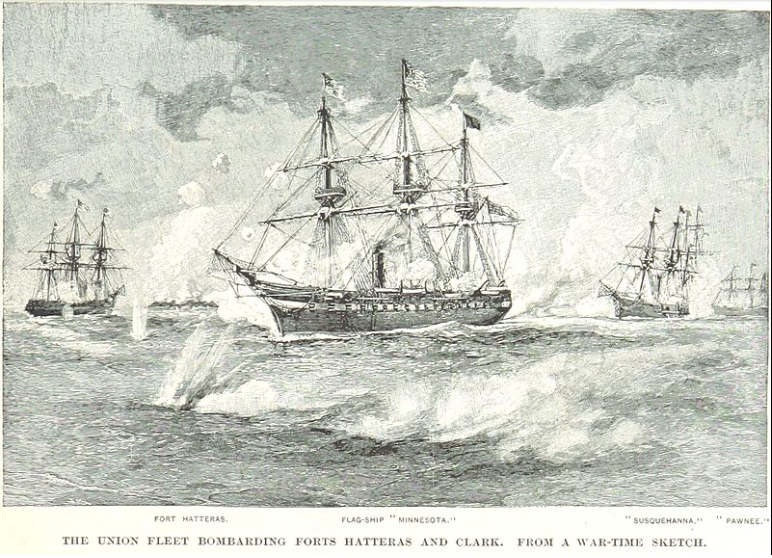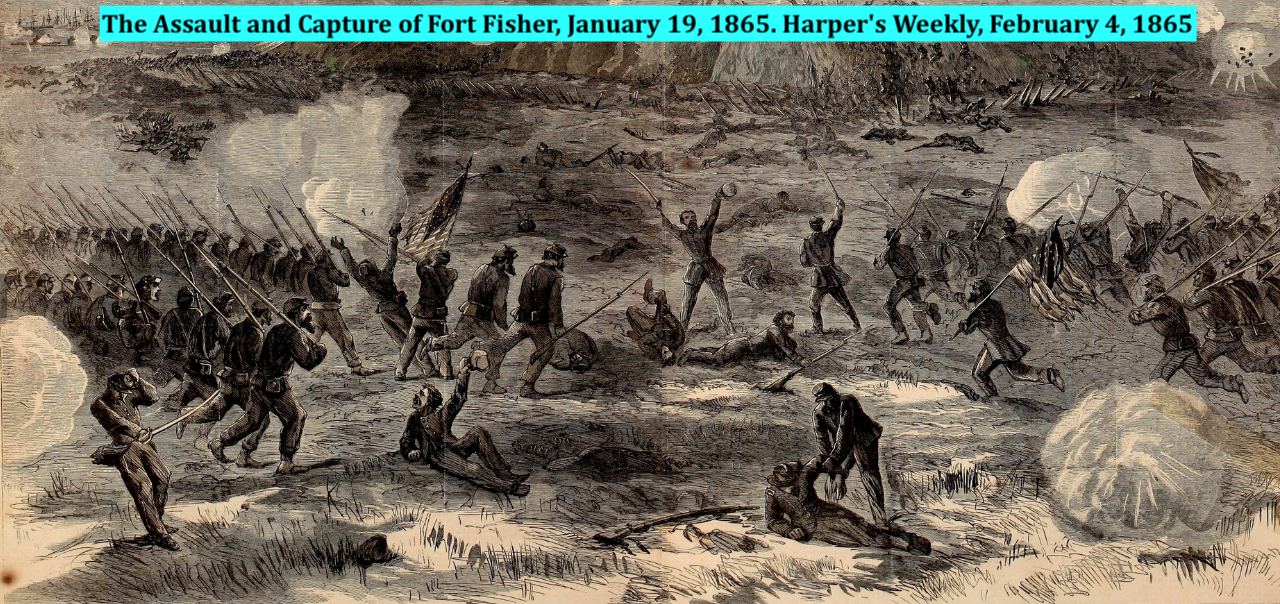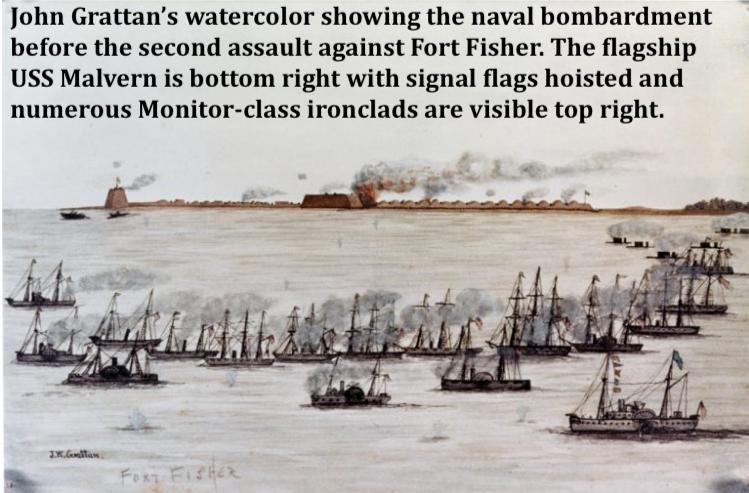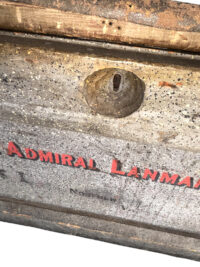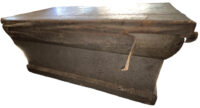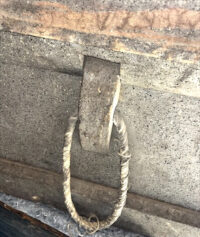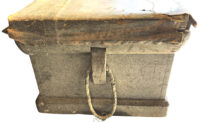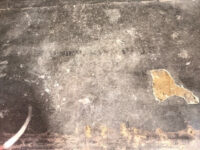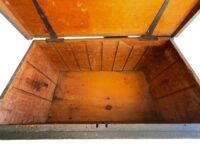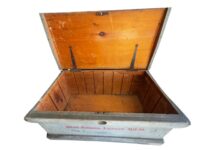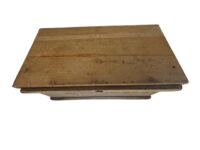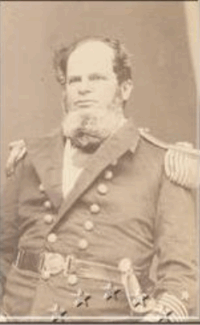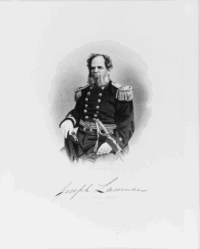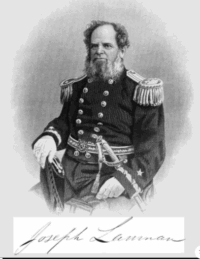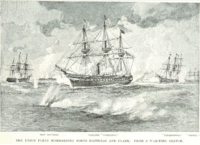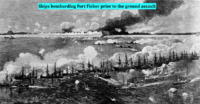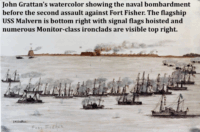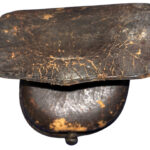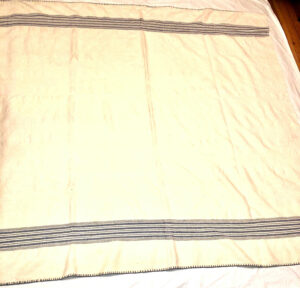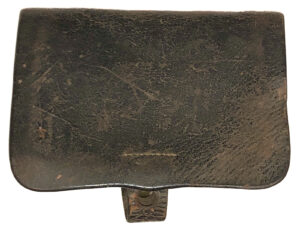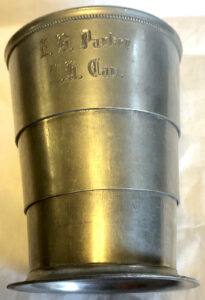Sea Trunk of Admiral Joseph Lanman Captain of the USS Minnesota during the Bombardment of Ft. Fisher
$1,950
Sea Trunk of Admiral Joseph Lanman Captain of the USS Minnesota during the Bombardment of Ft. Fisher – This trunk was the possession of Joseph Lanman, who had an over 40-year career in the U.S. Navy: Appointed Midshipman from the State of Connecticut, January 1, 1825; Passed Midshipman June 4, 1831; commissioned Lieutenant March 3, 1835; Commander September 14, 1855; Captain July 16, 1862; Commodore August 29, 1862; commissioned Rear-admiral December 8, 1867. During the Civil War, Lanman commanded the USS Saranac in the Pacific fleet and the USS Minnesota in the North Atlantic Blockading Squadron; in command of the Minnesota, he participated in the attacks on Fort Fisher. After the war, he commanded the South Atlantic Squadron until his retirement in 1872 (Additional information about Lanman’s naval career is enumerated below).
This trunk remains in excellent condition, retaining the majority of its original paint and its sail cloth, top cover. Painted on the front of the trunk is:
“Rear Admiral Lanman U.S.N.
No. 1
Norfolk
VA”
Stenciled on the sail cloth cover, on the top of the trunk, appears to be Lanman’s rank and name. The trunk is six-board, dovetailed in construction; it has its original strap hinges and has routed separator channels on all four of the interior sides. Both original beckets with their period rope handles remain intact. The sail cloth cover is in good condition, although somewhat soiled from use; there is a torn section on the back side of the cover. We assume that this trunk saw service during Lanman’s pre-Civil War and Civil War career, as he was appointed to the rank of Admiral after his participation in the bombardment of Ft. Fisher and prior to his assumption as commandant of the Portsmouth, NH Navy Yard, hence the seemingly later red painting of his name and rank; the trunk may have been sent, with Lanman, to Norfolk, either prior to or just after the action at Ft. Fisher.
Measurements: L – 39.5”; W – 29.5”; H – 17”
- Civil War service:
- Served on the USS Minnesota as part of the North Atlantic Blocking Squadron from 1864-1865.
- Participated in two attacks on Fort Fisher as part of Admiral Porter’s squadron.
- Was Captain of the USS Saranac in the Pacific Squadron in 1862.
- USS Saranacwas a sloop-of-war of the United States Navy. The ship laid down in 1847 during the Mexican–American War; however, by the time she completed sea trials, the war was over. She was commissioned in 1850 and saw service protecting American interests in the Atlantic Ocean as well as the Pacific Ocean.
- When the American Civil Warbroke out, Saranac patrolled America’s West Coast. Retained by the Navy post-war, she continued in service until wrecked on Vancouver Island, British Columbia in 1875.
- Post-war and retirement:
- Commanded the South Atlantic Squadron from 1867 until his retirement.
- Served as Commandant of the Portsmouth Navy Yard.
- Retired in 1872 after 47 years of naval service.
Joseph Lanman from Norwich, Connecticut, was commodore of the Pacific Squadron early in the war and later led part of the North Atlantic Blockading Squadron and a naval division during the bombardment and capture of Fort Fisher, a strong bastion that protected the seaborne entrance to Wilmington, North Carolina. This action closed this last major Confederate port on the Atlantic coast. Lanman was later promoted to Rear Admiral.
Battles of Fort Fisher (Wilmington, North Carolina)
For the next few years she served as flagship of the North Atlantic Blockading Squadron for the Union Navy / United States Navy. During the Battle of Suffolk at Norfleet House on 14 April 1863, four of the Minnesota‘s sailors, Coxswains Robert Jordan and Robert B. Wood and Seamen Henry Thielberg and Samuel Woods, earned the famous congressional Medal of Honor while temporarily assigned to the accompanying USS Mount Washington. While anchored off Newport News on 9 April 1864, the Minnesota was attacked by the Confederate States naval torpedo boat Squib, which exploded a torpedo charge alongside the federal warship, fortunately without causing substantial damage and escaped.
On 24 and 25 December 1864, Minnesota took part in the joint Union Navy and Army amphibious operations at the Confederate bastion of Fort Fisher which guarded Wilmington, North Carolina (the First Battle of Fort Fisher) upstream on the Cape Fear River, the last major open seaport of the South to the outside world. During the landings she took a position about a mile downstream from the fort and laid down a devastating artillery barrage on the Confederate stronghold. However, Union General Benjamin F. Butler (1818–1893), withdrew his troops, nullifying the previous gains won by the joint Army-Navy effort.
Three weeks later in January 13–15, 1865, the Union Navy returned with more Federal Army troops, now commanded by the much more vigorous and aggressive General Alfred Terry (1827–1890), to Fort Fisher for a second effort (the Second Battle of Fort Fisher). A landing force of 240 men from Minnesota, covered by a cannonade barrage from their own ship, participated in the successful assault. This operation finally after four years of effort closed outside access to the city and port of Wilmington, denying the collapsing southern Confederacy the use of this very last open invaluable major seaport, just three months before the end of the war in the East.
During the Second Battle of Fort Fisher of January 1865, nine sailors and Marines from the Minnesota earned the congressional Medal of Honor as part of the landing party which assaulted the fort.
USS Minnesota (1855)
| Minnesota at Hampton-Roads in 1862 | |
| History | |
| United States | |
| Name | USS Minnesota |
| Namesake | The Minnesota River |
| Builder | Washington Navy Yard, Washington, D.C. |
| Laid down | May 1854 |
| Launched | 1 December 1855 |
| Sponsored by | Susan L. Mann |
| Commissioned | 21 May 1857 |
| Decommissioned | 2 June 1859 |
| Recommissioned | 2 May 1861 |
| Decommissioned | 16 February 1865 |
| Recommissioned | 3 June 1867 |
| Out of service | Placed in ordinary 13 January 1868 |
| Recommissioned | 12 June 1875 |
| Out of service | Loaned to Massachusetts Naval Militia October 1895-August 1901 |
| Fate | Sold August 1901; later burned |
| General characteristics | |
| Type | Screw frigate |
| Displacement | 3,307 long tons (3,360 t) |
| Length | 264 ft 9 in (80.70 m) |
| Beam | 51 ft 4 in (15.65 m) |
| Draft | 23 ft 10 in (7.26 m) |
| Propulsion | Steam engine |
| Sail plan | Ship Rig |
| Speed | 12.5 knots |
| Complement | 646 officers and enlisted |
| Armament | ·2 × 10 in (250 mm) guns
·28 × 9 in (230 mm) guns ·14 × 8 in (200 mm) guns |
USS Minnesota was a wooden steam frigate in the United States Navy. Launched in 1855 and commissioned eighteen months later, the ship served in east Asia for two years before being decommissioned. She was recommissioned at the outbreak of the American Civil War and returned to service as the flagship of the North Atlantic Blockading Squadron.
During the first day of the Battle of Hampton Roads on 8 March 1862, Minnesota ran aground, and the following battle badly damaged her and inflicted many casualties. On the second day of the battle, USS Monitor engaged CSS Virginia, allowing tugs to free Minnesota on the morning of 10 March. Minnesota was repaired and returned to duty, and three years later she participated in the Second Battle of Fort Fisher. Minnesota served until 1898, when she was stricken, beached and burnt to recover her metal fittings and to clear her name for a newly ordered battleship.
The USS Minnesota was a key Union ship in both the first and second battles of Fort Fisher in January 1865. During the successful second assault, the Minnesota provided heavy naval fire and sent a landing party of 240 men to join the successful land assault on the fort, which secured Wilmington, NC, the Confederacy’s last major open port. Nine sailors and Marines from the Minnesota received the Medal of Honor for their actions during this landing.
Second Battle of Fort Fisher (January 1865)
- Role of the Minnesota: The Minnesota, as flagship of the North Atlantic Blockading Squadron, was instrumental in the second attack on Fort Fisher.
- Naval bombardment: The Minnesota and other Union ships provided a massive naval bombardment that battered the fort’s defenses, rendering most of its guns unserviceable.
- Land assault: A landing party of 240 men from the Minnesota joined the Union Army’s successful infantry assault on the fort.
- Outcome: The Union victory captured Fort Fisher, closing Wilmington, North Carolina, and sealing the Confederacy’s last major port.
- Medal of Honor recipients: Nine sailors and Marines from the Minnesota were awarded the Medal of Honor for their heroism in the landing party that stormed the fort.


